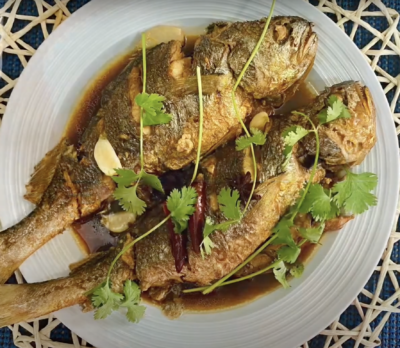Yellow croaker(Larimichthys polyactis)
Overview:
Yellow Croaker, a species of marine fish, is widely distributed in the waters of the Northwest Pacific, including the East China Sea, the Yellow Sea, and the Bohai Sea. It is a popular seafood in East Asia, known for its delicate flavor and tender texture, and is often used in various culinary dishes, especially in Chinese and Korean cuisines.
Habitat:
Yellow Croaker primarily inhabits the coastal waters of East Asia, thriving in temperate and subtropical waters. It is commonly found in shallow waters, but can also be found in deeper waters, depending on the season and life stage.
Taste and Texture:
Yellow Croaker has a mild, sweet flavor with a hint of umami, making it a versatile ingredient in many dishes. The flesh is tender, moist, and flaky, with a smooth texture that melts in the mouth.
Nutritional Value:
Yellow Croaker is a nutritious seafood option, rich in high-quality protein, vitamins, and minerals. It is a good source of Omega-3 fatty acids, which are beneficial for heart health, and vitamin D, essential for bone health.
Cooking Methods:
Yellow Croaker can be prepared using various cooking methods, including steaming, frying, and braising. Here are some cooking suggestions:
- Steaming: Steamed Yellow Croaker retains its natural flavor and moisture, often seasoned with soy sauce, ginger, and scallions.
- Frying: Fried Yellow Croaker has a crispy exterior and a tender interior, usually served with a dipping sauce.
- Braising: Braised Yellow Croaker is cooked slowly in a flavorful liquid, resulting in a rich and savory dish.
Recommendations:
- Yellow Croaker pairs well with a variety of seasonings and sauces, allowing for diverse culinary creations.
- It is best enjoyed fresh, but it can also be dried for longer preservation and a more concentrated flavor.
- Be mindful of the small bones when consuming Yellow Croaker.
Conclusion:
Yellow Croaker is a delightful seafood option, offering a unique flavor and texture. Whether steamed, fried, or braised, it can be enjoyed in a myriad of dishes, making it a favorite choice for seafood lovers in East Asia.

